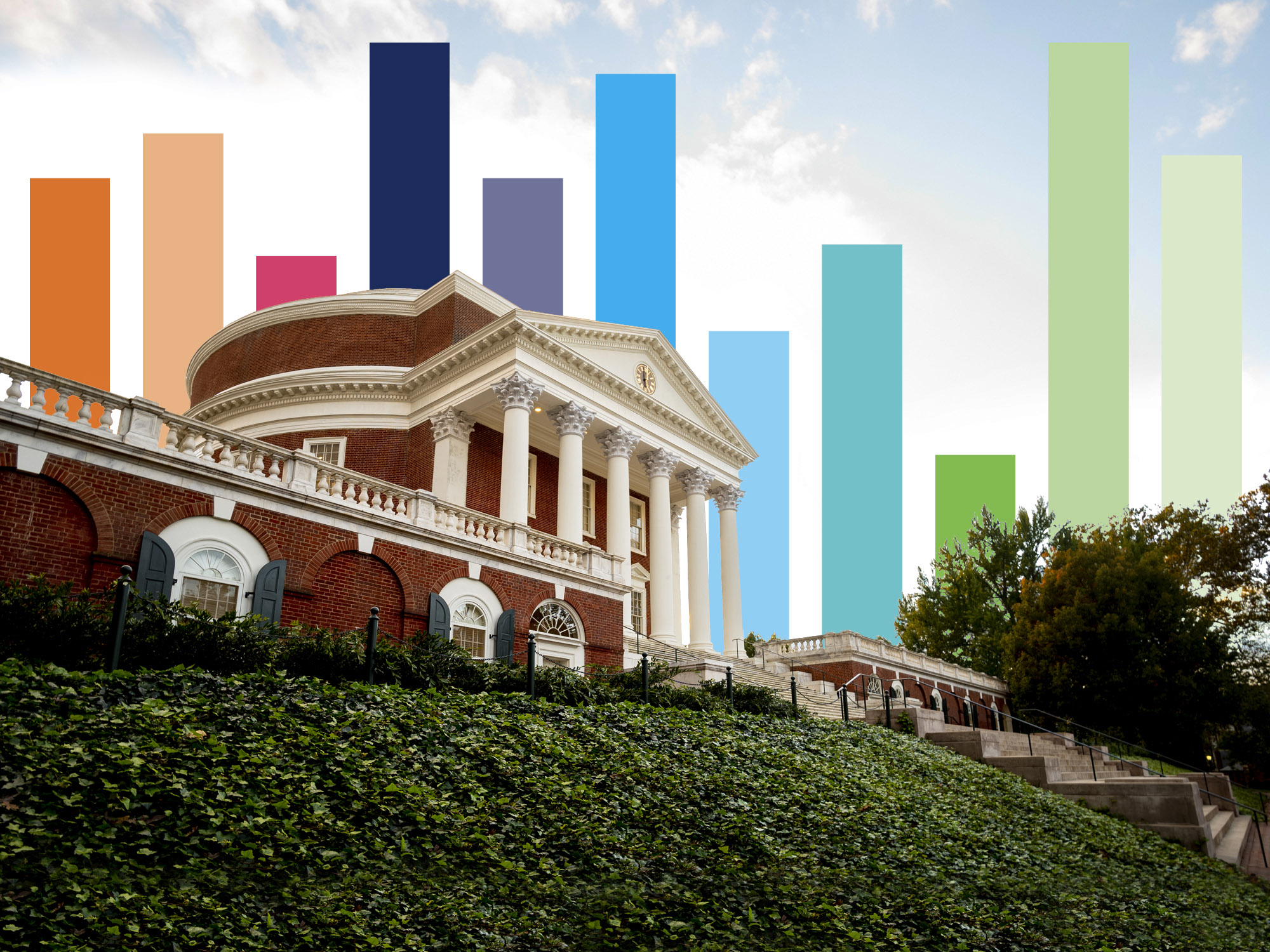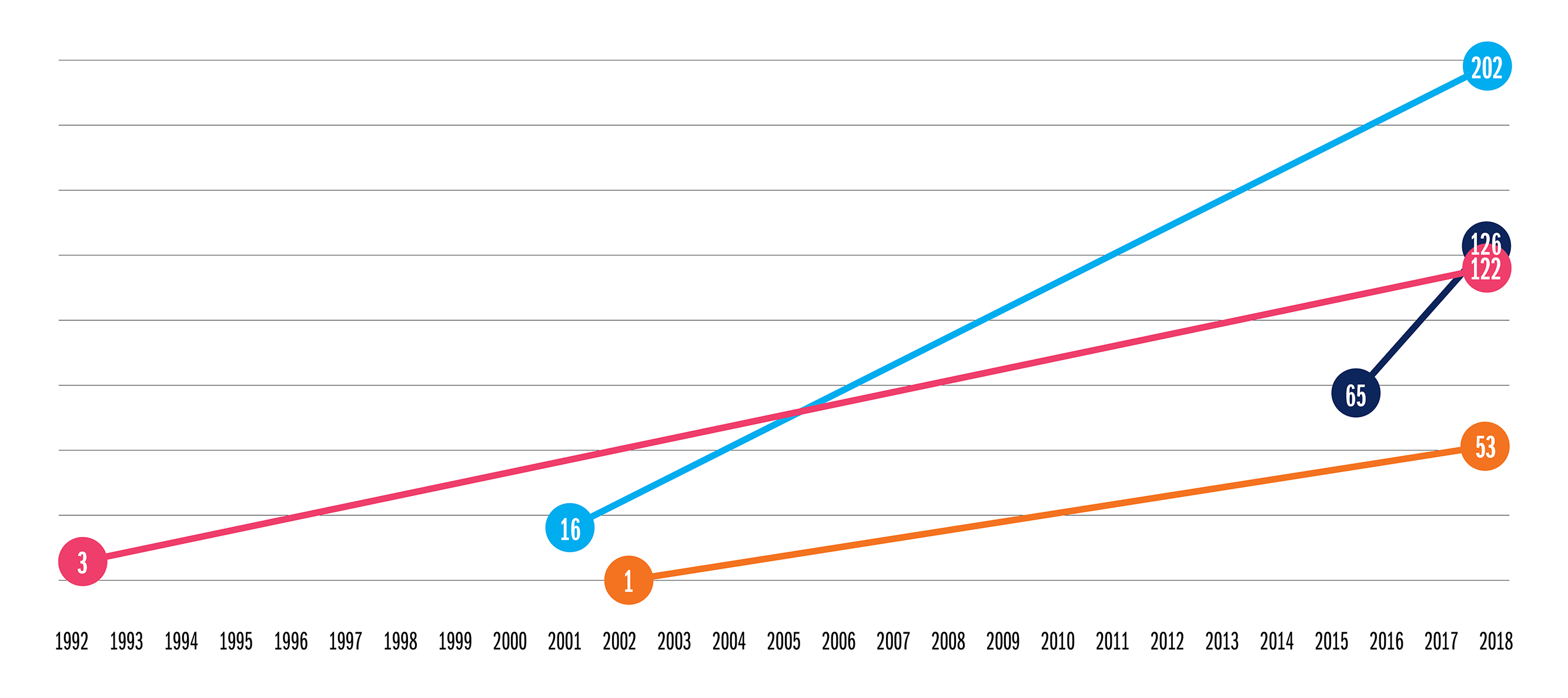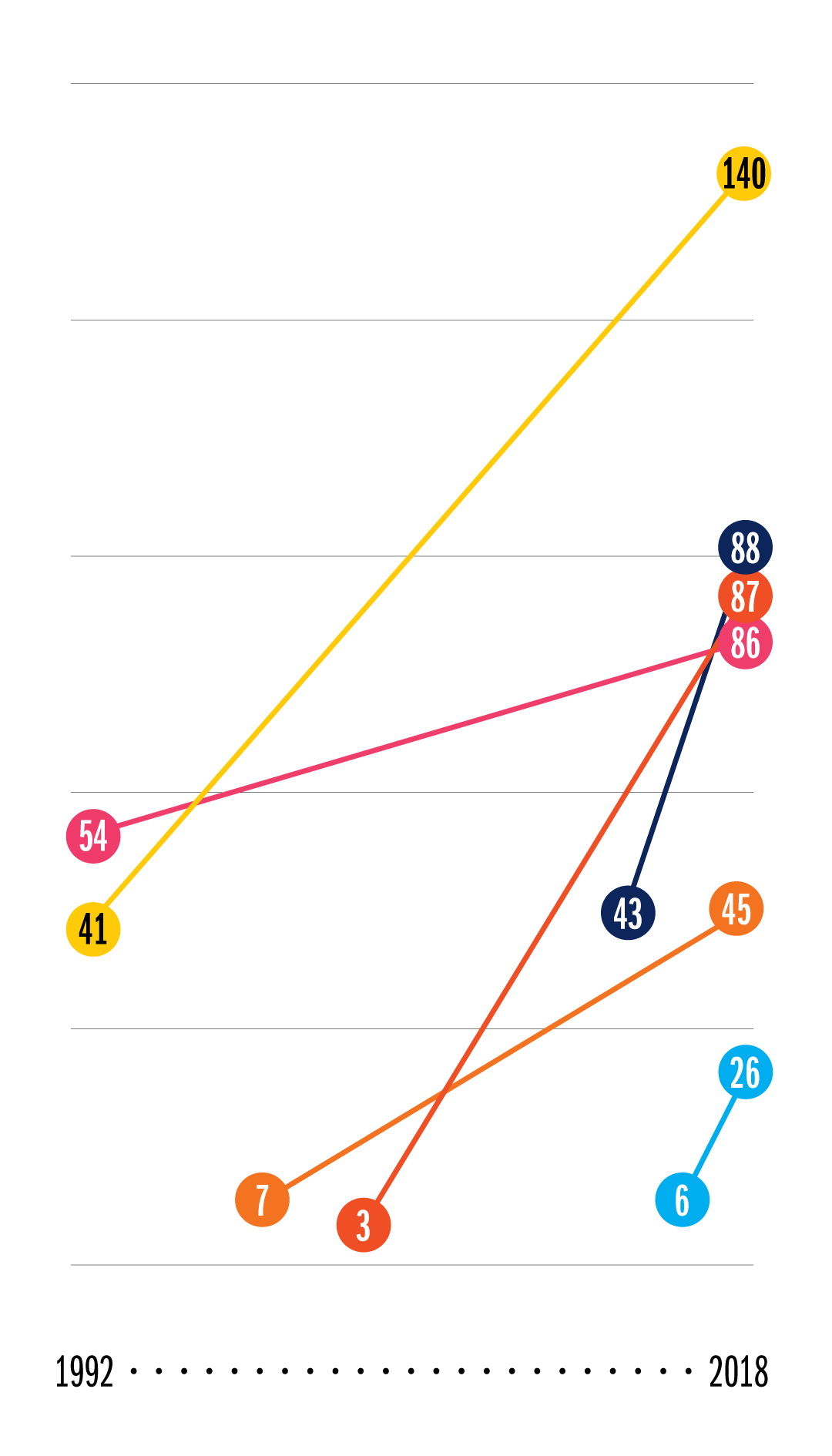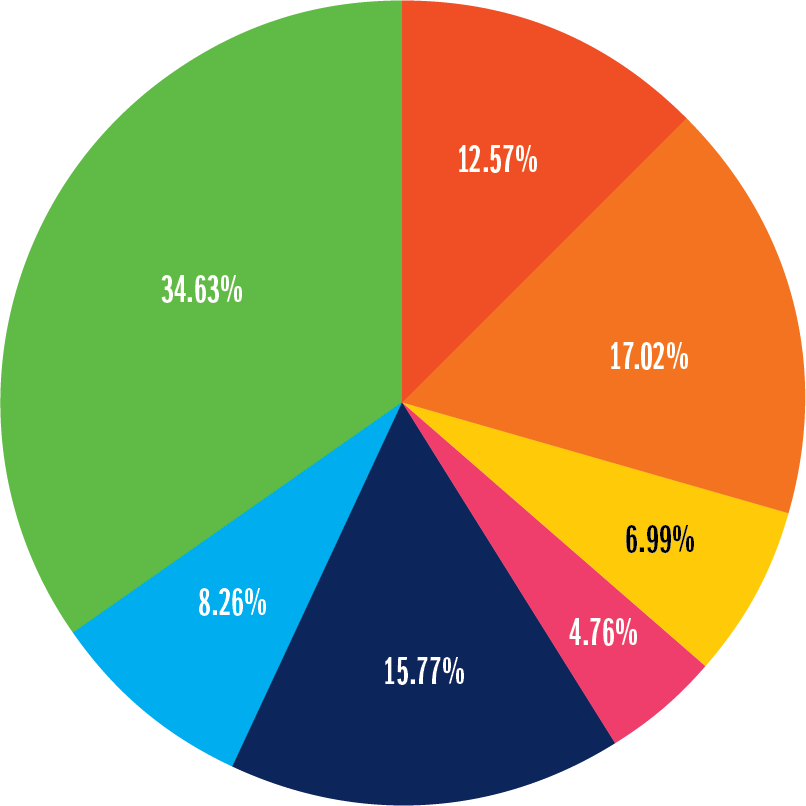During Final Exercises this weekend, the University of Virginia will award more than 7,000 degrees across its 11 schools, continuing a steady climb in the number of degrees awarded annually and, more broadly, the number of students from Virginia and around the world who have found life-changing opportunity at UVA.
The data reveal more than the obvious – that UVA prepares more students than ever for in-demand jobs and lives of service to others. The numbers reflect the University’s continuing evolution in how students learn: the growth of interdisciplinary majors, the rise of new programs and areas of study, and the constant draw of a liberal arts education, through which UVA students are introduced to and captivated by a huge and ever-changing variety of subjects.
Growing Numbers Degrees awarded by fiscal year
- Architecture
- Arts and Sciences
- Basic Medical Sciences
- Commerce
- Continuing and Professional Studies
- Darden
- Education
- Engineering
- Law
- Leadership and Public Policy
- Medicine
- Nursing
- Provost Graduate
- All Schools
- All Schools
- Architecture
- Arts and Sciences
- Basic Medical Sciences
- Commerce
- Continuing and Professional Studies
- Darden
- Education
- Engineering
- Law
- Leadership and Public Policy
- Medicine
- Nursing
- Provost Graduate
The above chart breaks down those degrees by school and type over the past 25 years, including bachelor’s, master’s, doctoral and pre-professional degrees, as well as preliminary numbers from the Class of 2019. “Provost Graduate” refers to students earning a Master of Data Science degree from UVA’s Data Science Institute. The data is drawn from UVA’s Office of Institutional Assessment and Studies.
Students are counted only once within any particular degree level. Ph.D. students in architecture, basic medical sciences, education and nursing, as well as master’s students in basic medical sciences and commerce, are counted with the appropriate school even though, for some schools and some years, those students registered through the College of Arts & Sciences. Use the drop-down menu on the chart to take a closer look at individual schools and areas of study.
Below, we dive even deeper.





